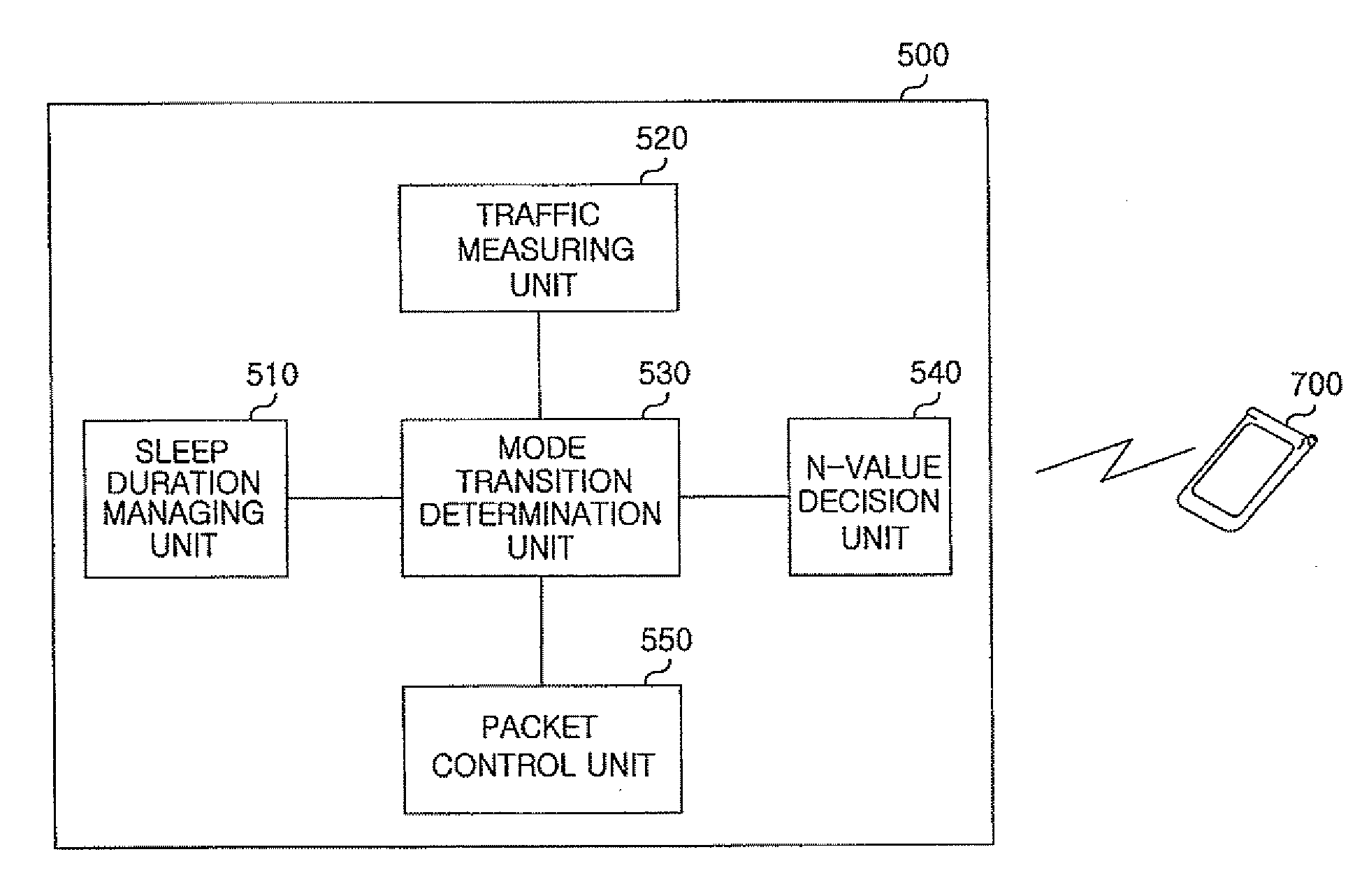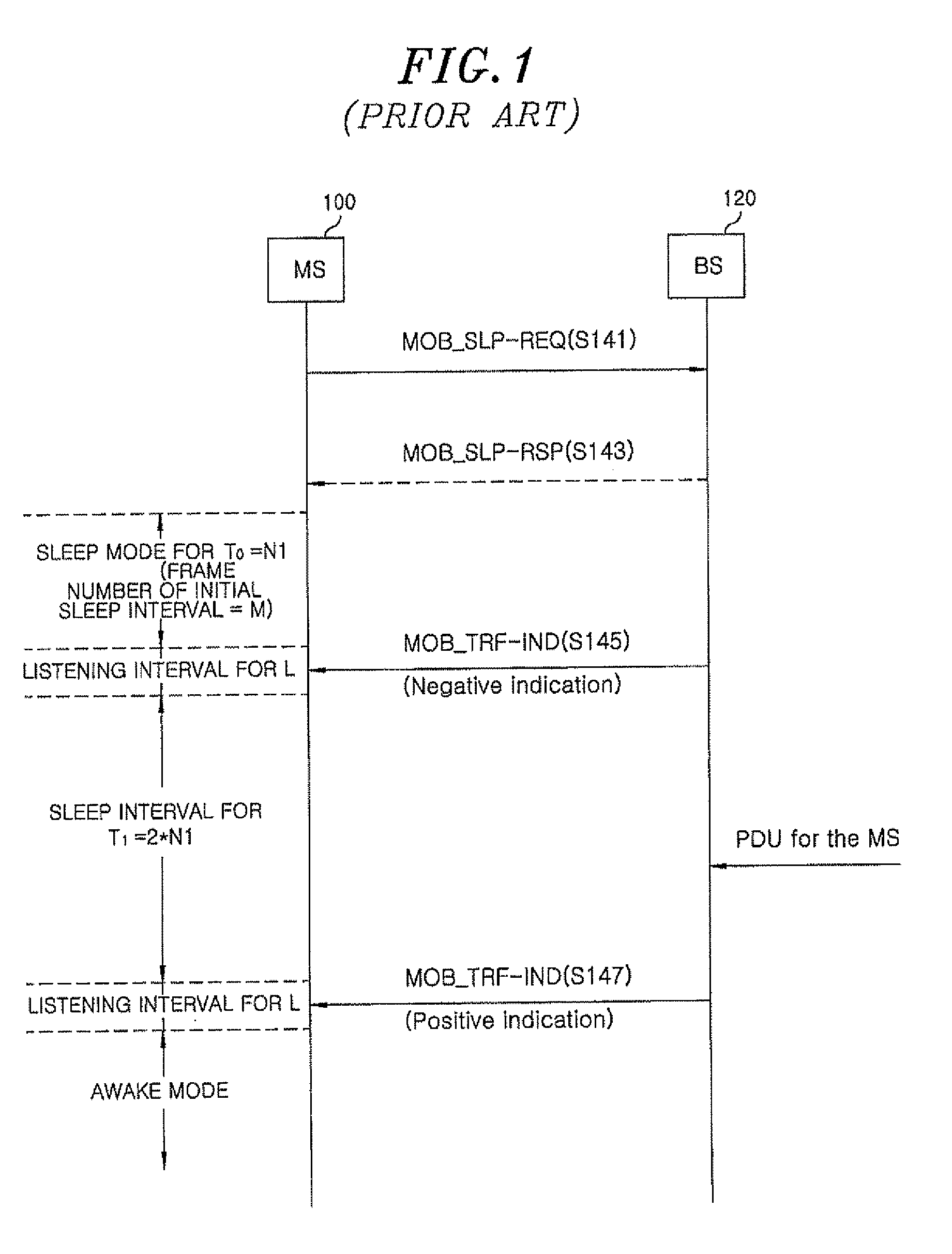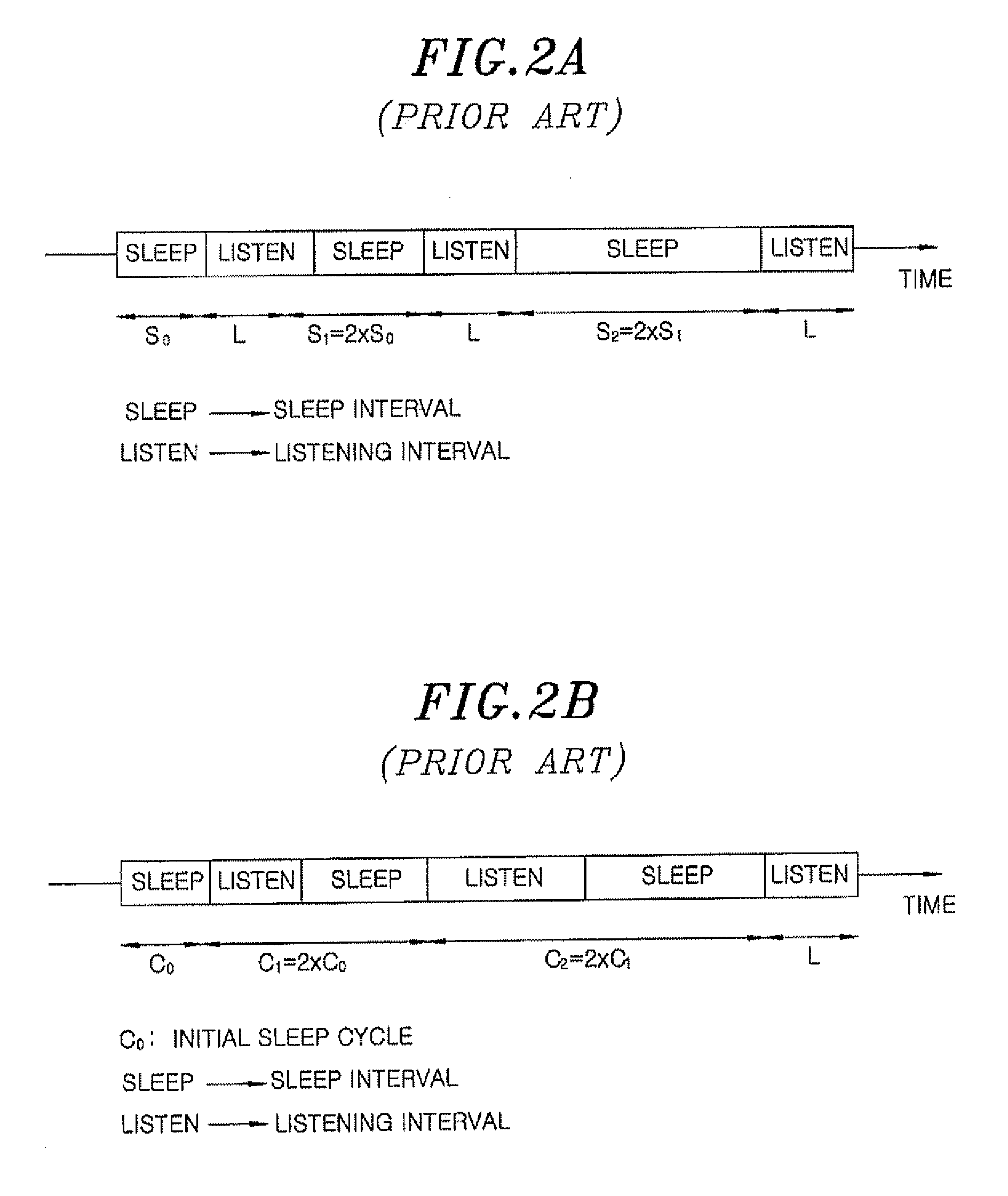Method and apparatus for controlling sleep mode in wireless communication networks
a wireless communication network and wireless communication technology, applied in climate sustainability, sustainable buildings, high-level techniques, etc., can solve the problems of high power consumption, significant factors affecting the overall performance of wireless communication systems, and power consumption of ms, so as to maximize power saving and prolong sleep duration
- Summary
- Abstract
- Description
- Claims
- Application Information
AI Technical Summary
Benefits of technology
Problems solved by technology
Method used
Image
Examples
first embodiment
[0029]FIG. 3 is a flow chart describing a method for controlling sleep mode in a wireless communication network in accordance with the present invention.
[0030]First, in step S201, a BS and an MS 700 determine various parameters necessary for the mode transition operation. For example, a length of initial sleep duration T0, the length of the maximum sleep duration Tmax, the number of additional consecutive sleep duration m upon arrival of packets, the maximum N-ary exponent Imax, the length of a time-out for retransmission R, the maximum number of allowed retransmissions Nmax, the required transmission delay constraint D* and the size of multiple packets M can be determined. Here, the length of the sleep duration corresponds to the length of each sleep interval S0, S1 or S2 in the wireless communication system based on the IEEE 802.16e standard shown in FIG. 2A, whereas it corresponds to the length of each sleep cycle C0, C1 or C2 in the wireless communication system based on the IEE...
second embodiment
[0052]FIG. 4 is a flow chart describing a method for controlling sleep mode in a wireless communication network in accordance with the present invention when a wireless communication system based on the IEEE 802.16e standard is employed.
[0053]First, in step S301, a BS and an MS determine various parameters required for the mode transition operation. For example, the length of an initial sleep interval S0, the length of the maximum sleep interval Smax, the number of additional consecutive sleep intervals m upon arrival of packets, the maximum N-ary exponent Imax, the length of a time-out for retransmissions R, the maximum number of allowed retransmissions Nmax, the required transmission delay constraint D and the threshold value M for the maximum number of packets allowed for one-time downlink transmission can be determined.
[0054]The above parameters can be determined by a sleep request (MOB_SLP-REQ) message and a sleep response (MOB_SLP-RSP) message exchanged between the BS and the ...
third embodiment
[0075]FIG. 5 is a flow chart describing a method for controlling sleep mode a wireless communication network in accordance with the present invention when a wireless communication system based on the IEEE 802.16m standard is employed.
[0076]First, in step S401, a BS and an MS determine various parameters required for the mode transition operation. For example, the length of an initial sleep cycle Co, the length of the maximum sleep cycle Cmax, the number of additional consecutive sleep cycles m upon arrival of packets, the maximum Nary exponent Imax, the length of a time-out for retransmission R, the maximum number of allowed retransmissions Nmax, the required transmission delay constraint D* and the threshold value M for the maximum number of packets allowed for one-time downlink transmission can be determined.
[0077]The above parameters can be determined by a sleep request (MOB_SLP-REQ) message and a sleep response (MOB_SLP-RSP) message exchanged between the BS and the MS. For examp...
PUM
 Login to View More
Login to View More Abstract
Description
Claims
Application Information
 Login to View More
Login to View More - R&D
- Intellectual Property
- Life Sciences
- Materials
- Tech Scout
- Unparalleled Data Quality
- Higher Quality Content
- 60% Fewer Hallucinations
Browse by: Latest US Patents, China's latest patents, Technical Efficacy Thesaurus, Application Domain, Technology Topic, Popular Technical Reports.
© 2025 PatSnap. All rights reserved.Legal|Privacy policy|Modern Slavery Act Transparency Statement|Sitemap|About US| Contact US: help@patsnap.com



